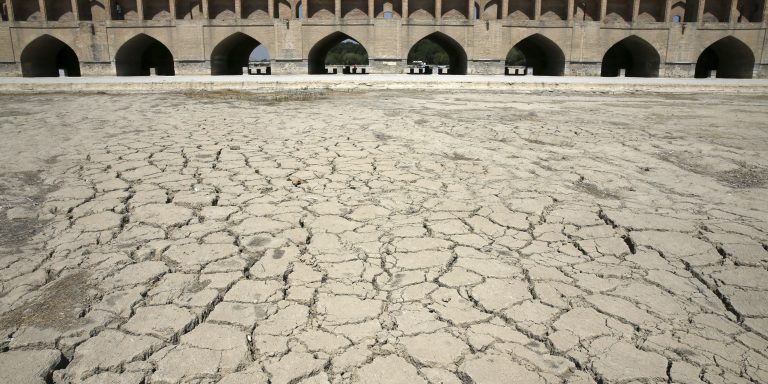INTELBRIEF
August 3, 2021
IntelBrief: Climate Change Contributes to Unrest in Iran

Bottom Line up Front
- A new wave of unrest in Iran reflects the effect of climate change, poor governance, and mismanagement.
- As has always been the case in Iran, the demonstrations have spread and evolved into political protests against Iran’s repressive leadership.
- The unrest is not likely to significantly weaken the grip of the regime, which is willing to use live ammunition and Internet shutdowns as a response.
- The Iran protests represent a harbinger of the effects of climate change on the broader Persian Gulf region.
Iran is experiencing a new wave of unrest, sparked by protests that emanated in the southwestern province of Khuzestan on July 15, 2021. Demonstrations against the national government, led at first by the province’s farmers and ranchers, were triggered by severe water shortages caused by a combination of drought and longstanding water and economic mismanagement. Environmental experts in Iran have long warned that the construction of hydroelectric dams, irrigation schemes, and water transfers to neighboring provinces from the oil-rich region were causing environmental harm and leading to water shortages. The effects of the mismanagement were undoubtedly magnified by climate change, which has, among other consequences, caused temperatures in the Gulf to escalate steadily. According to Iran’s meteorological agency, the country’s average rainfall has decreased 20% in the last 20 years, and October 2020 to June 2021 was the driest period in 53 years. This is not the first series of protests born from environmental grievances. The Dey riots from 2017- 2018, which represented the most significant challenge to the regime since the Green Movement, had economic and environmental precursors.
As has been the recent pattern, protests that started in response to specific conditions in one locality later spread to Iran’s major cities and reflected broad discontent with the Islamic Republic’s poor governance and repressive practices. Khuzestan province has a large concentration of ethnic Arabs, and the outbreak of demonstrations in the province was compounded by the regime’s generally harsh treatment of and discrimination against ethnic Arabs. The unrest might also reflect widespread resentment of the regime’s engineering of the victory of Ibrahim Raisi, the hand-picked choice of Supreme Leader Ali Khamene’i, in the June 18 presidential election.
Iran’s leaders have responded to the unrest with the well-established playbook they have used to suppress major demonstrations on other occasions, including, most recently, the relatively large uprising in November 2019. They initiated mass arrests and authorized some security forces to use live ammunition. International human rights groups have documented the deaths of at least nine people since the recent unrest began, including a 17-year-old boy. The government also shut down the use of the Internet to try to prevent people from organizing demonstrations. At the same time, senior officials also employed a strategy that they began to use in the 2019 unrest: acknowledging the right to protest and that some of the demonstrators’ grievances were legitimate. On July 25, the Iranian judiciary’s news agency reported that Gholamhossein Eje’i, who succeeded Raisi as head of the judiciary after he left that position to assume the presidency, had ordered the Khuzestan courts to release those arrested for protesting. As of the beginning of August, the regime’s responses had reduced the intensity of the unrest and, as has usually been the case to date, the demonstrations will not shake the regime’s grip on power.
Although Iran’s repressive policies make the country ripe for popular uprisings, the July demonstrations were sparked by factors that are not exclusive to Iran and which could easily affect other governments in the Gulf region. The water scarcity issues in southwestern Iran are widely assessed as an effect of global climate change, which is causing significant disruptions not only in Iran but also in the broader Gulf. According to climate scientists, the combination of heat and humidity in the Gulf are approaching levels that threaten human survivability. According to some studies, the region around the Arabian Gulf could exceed normal survivability thresholds if “business-as-usual” predictions of future greenhouse gas concentrations hold true. And, the effects can be political as well as economic and social. Some of the smaller Gulf states, especially those dependent on foreign labor, have faced worker protests and scrutiny from governments and international labor organizations over harsh working conditions, including work during the hottest hours of the summer months. The response by Western governments to climate change is certain to reduce future demand for the hydrocarbon exports on which the Gulf monarchies, Iran, and Iraq depend for revenues. Although Iran faces the most immediate consequences from these trends, all Gulf countries will need to articulate comprehensive and actionable strategies for mitigating the effects of climate change on their social, economic, or political life.